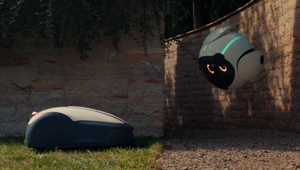
It’s Time to Get Real: Why Authenticity Marketing is a Wolf in Sheep’s Clothing

A hush descends, our protagonist steps into the spotlight:
“Step inside and make yourself comfortable on this hand-woven rug. Sip on our limited production dandelion-infused gin and watch as our founder (bearded, intense, faintly righteous) crafts this morning’s foraged treasures into a feast for the senses...”
*awe and applause*
Sound ridiculous? It is. But like an axe slicing through artifice, the discourse of authenticity marketing has become ripe for parody. And that’s a problem for brands in the eternal fight for relevancy.
Over-reliance on brand heritage, assertions of craftsmanship and all the other formulaic badges of credibility are starting to look meaningless. What once felt reassuring and trustworthy - against a backdrop of the financial crash and the hopeful, well-meaning flourishing of the original hipster - now looks like a clichéd marketing illusion.
Being truly authentic doesn’t mean donning a leather apron and acting the part of a tortured artisan. Consumers are clued-up and easily bored by irrelevance and gimmicks. We marketers must give them a believable story they find interesting and pertinent. Because if we don’t, they will switch off.
The rise of the deletist consumer is by now a well-documented phenomenon that brands must tackle head on if they are going to reach their audience in a meaningful way. According to the Reuters Institute for the Study of Journalism, almost half of US internet users and 39% of UK internet users have installed ad-blocking software on at least one device. They’re deleting emails before reading them, unfollowing brands on social media and turning down (or off) the amount of native content advertising they are exposed to – all to get away from too many messages coming at them from all angles. It’s undeniably a problem I have witnessed first-hand. Trying to be topical, relevant and entertaining enough to beat the evermore ruthless algorithms, and land a plethora of brand messages… it’s a tough brief that fatigues content and creative teams as much as it does consumers.
So how do we tell those believable, truly authentic stories without falling into lazy marketing traps and risking being permanently blocked by our audience?
I believe 5 key principles can guide us all to finding and perpetuating brand truths that produce genuinely honest, self-aware and meaningful content.
1. Find your purpose. What makes your product or service right for now? How does it help, entertain or inform your audience right now? Find that insight, then creatively and consistently execute against it.
2. Know your audience. Like, really know them. Get the right tools to build detailed portraits, track when and where they’re online, and how they are engaging. Crunch that data, track your results and then start all over again.
3. Refresh yourself. Just when you think you’ve nailed your content strategy, upset your status quo. Question your success, stop what isn’t working and move onto new ways of bringing your purpose to life.
4. Know when to shut up. The ‘always on’ content strategy is outdated and flawed. If it were a person, you would have told them to piss off years ago. The same goes for your brand.
5. Collaborate. Work with influencers who genuinely buy into your purpose and like your ideas. Consumers will see that and respect you for it.
So who’s getting it right? To finish, here are 3 brands I recommend you look up.
First, to fashion. Chanel, one of the oldest fashion houses, adopts subtle cues to remind us of their history whilst pulling us relentlessly into the here and now. Take for example Lily-Rose Depp: hot pop culture property and the newest ‘face’ to be announced some 24 years after her mother, Vanessa Paradis, was chosen to star in the Coco Chanel ‘birdcage’ advert (which, incidentally, briefly shows the ghost of Coco Chanel herself). Collaboration and forward-thinking at its best.
Next take LEGO. A firm childhood favourite and despite approaching 90-years old, still as spritely as it ever was. Not for them to rumble on about how long they’ve been around. Constant product innovation, often aligned to topical cultural phenomenon like Star Wars, Disney and comic books is combined with an ever-young approach to showing off the joy that an hour or two playing LEGO can bring. Take a look at their social channels to see what I mean.
And finally, to the booze category and St. Stefanus, a beer brewed by a Belgian monastic order since the 12th century. Dig into their website and this is a brand steeped in religious and sociological history, with more rights than most to labour the obvious heritage and craft cues. But this brand is no antique: instead we find entertaining food pairing ideas, beer geek info on how to age and enjoy your beer at home and critically, where you can walk into a bar and actually drink the stuff.
So - if ever there was a time to dump that phoney dandelion gin in the flowerbed where it belongs and pick up a restorative pint of marketing reality, this is it.
Cheers.
Ria Campbell is Head of Content Activism at Southpaw













